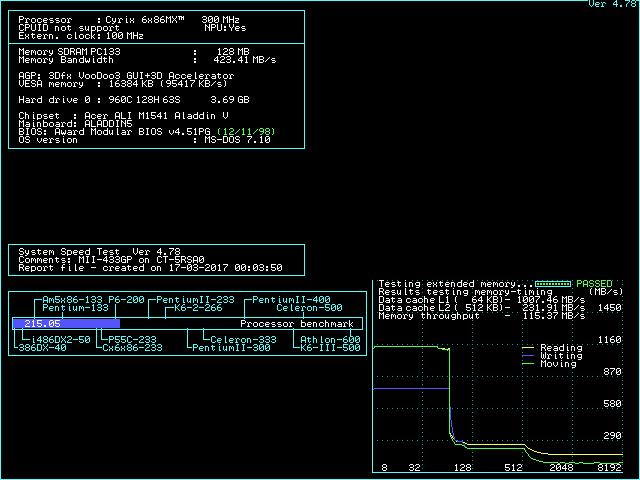Reply 20 of 59, by BSA Starfire
- Rank
- Oldbie
I currently run a load of Cyrix systems including a 5x86 100,Media GX 180MHz, 6x86 PR166+(not the L version), MII 333 2.9v. To be honest all of them require a bit more effort with the cooling than say a Pentium MMX or classic. I tend to use a fairly meaty heatsink on the socket 7 chips, the kind of thing that would have been used on a Celeron mendocino or early PIII skt370. That with a thin coat of thermal paste(cheap crap off ebay) and a good fan and no worries. I have to use a fan on my 5x86 100 too or I get crashes, that fancy green heatsink is not good enough, at least for my chip at stock volts and speed, a small 40mm fan screwed on top and all is well.
Hope you have lot's of fun with your new Cyrix build, they are great little chips and it's nice to have something a bit different 😀
Best,
Chris
286 20MHz,1MB RAM,Trident 8900B 1MB, Conner CFA-170A.SB 1350B
386SX 33MHz,ULSI 387,4MB Ram,OAK OTI077 1MB. Seagate ST1144A, MS WSS audio
Amstrad PC 9486i, DX/2 66, 16 MB RAM, Cirrus SVGA,Win 95,SB 16
Cyrix MII 333,128MB,SiS 6326 H0 rev,ESS 1869,Win ME
